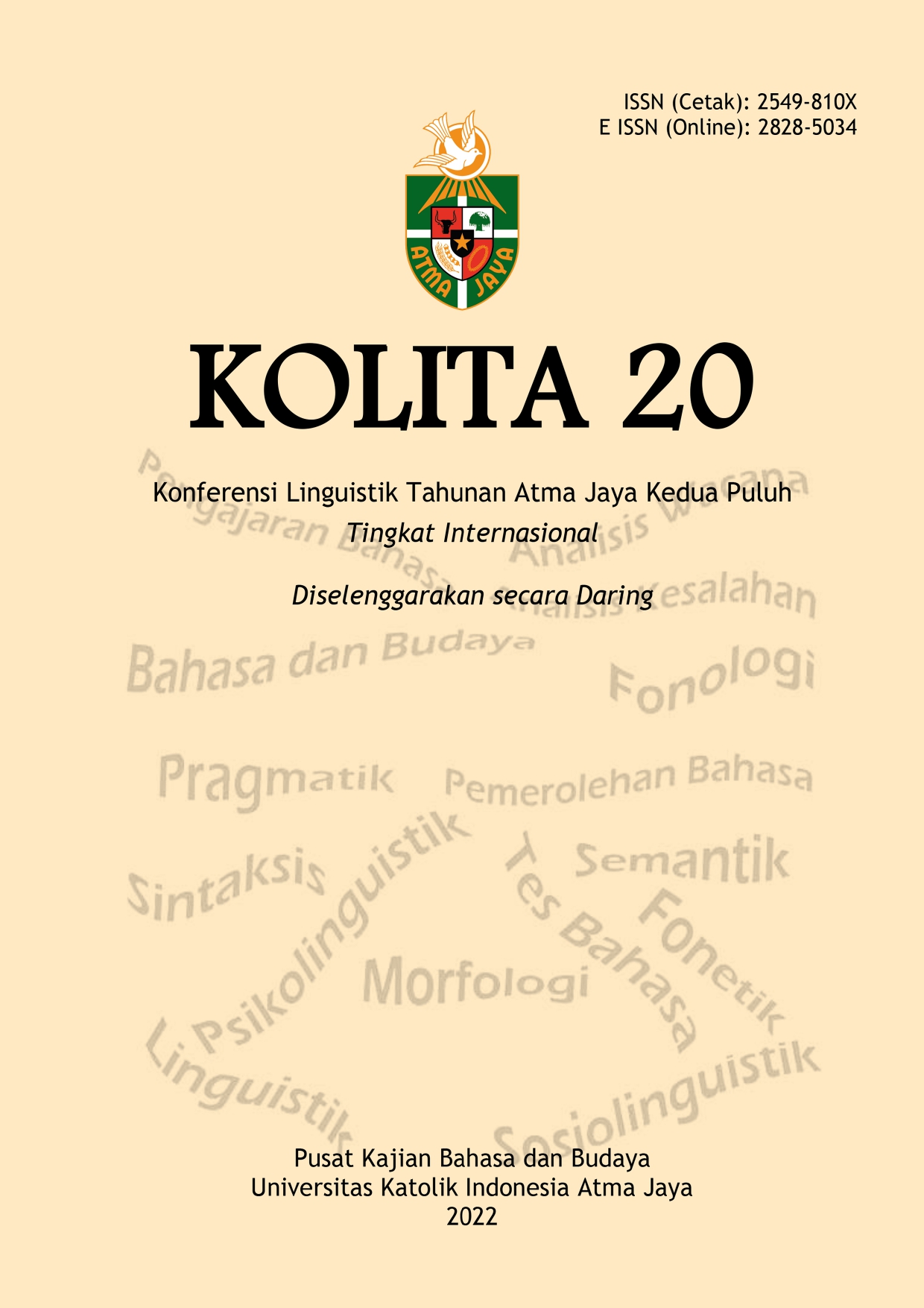CULTURAL CONTENT ANALYSIS IN TWO EFL TEXTBOOKS USED BY BOARDING SCHOOLS IN BANTEN: A MULTIMODAL ANALYSIS
DOI:
https://doi.org/10.25170/kolita.20.3786Keywords:
elements of culture, expanding circle culture, inner circle culture, outer circle culture, types of cultureAbstract
Learning a language also contains a cultural learning component. Teaching a foreign language in a country can help to promote the learner’s local culture. English is the most significant language for cross-cultural communication amongst people all over the world in these global Englishes. English is included in the education curriculum in Indonesia and has been learned as a foreign language since the elementary school level. This study aims to find out the cultural content in EFL Textbooks used by Boarding Schools in Banten as well as how the representation of culture in the textbooks. Kachru’s Three Concentric Circle of English (1984) and Moran’s Five Dimension of Culture (2001) were used as the main theory in this study. Content analysis qualitative research was used in this study. This research is a multimodal analysis because the data is not only in the form of words but also from pictures and audio. The subjects of this analysis are two textbooks used by SMA Islam Nurul Fikri Serang and SMAN CMBBS Pandeglang with the textbooks title are “Pathway to English” Grade X and “Symphony 1” Grade X. Mile and Huberman’s theory about qualitative data analysis method (2014) i.e. Data Condensation, Data display, and Conclusion drawing used in this study for analyzing the data. The data analysis on the two textbooks reveals that first, Inner circle culture, Outer Circle Culture, Expanding Circle Culture, and Local culture were identified in the textbook with the most dominant type is inner circle culture; second, the cultural content in the two textbooks were represented by product, practice, perspective, community, and person with the most dominant occurrence was products. This study concludes that the cultural content in the two textbooks still orients to and promotes the inner circle culture and accommodating local culture, expanding circle culture and outer circle culture.






